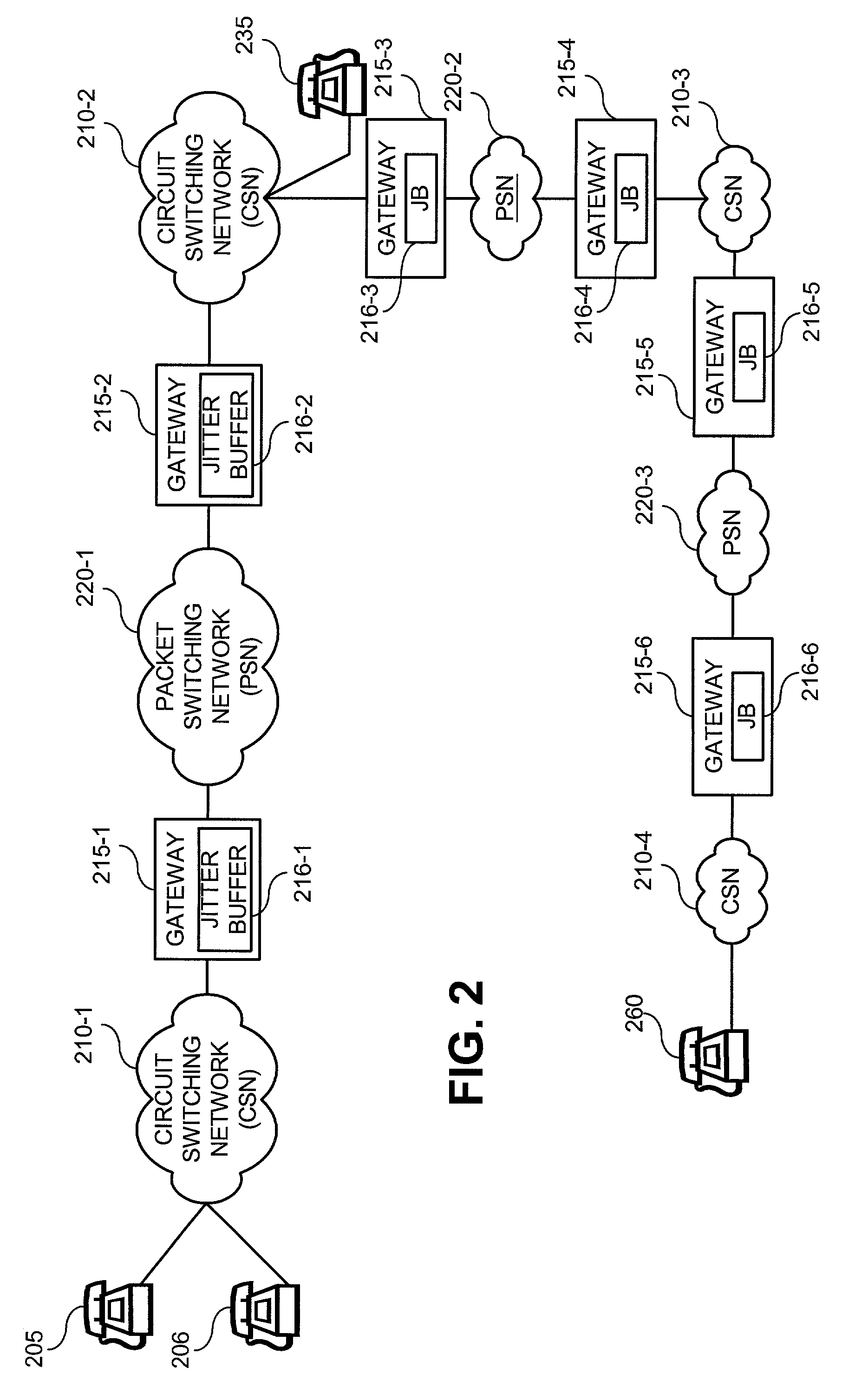Techniques for jitter buffer delay management
a technology of jitter buffer and delay management, applied in the field of buffers, can solve problems such as implicit jitter buffer delay, and achieve the effects of improving the management of jitter buffer, effective increase of implicit delay associated with jitter buffer, and effective reduction of implicit delay
- Summary
- Abstract
- Description
- Claims
- Application Information
AI Technical Summary
Benefits of technology
Problems solved by technology
Method used
Image
Examples
Embodiment Construction
[0016]The present invention provides techniques for jitter buffer delay management. In conventional packet switching systems that carry voice packets (commonly called “Voice Over Packet” or VOP systems), an explicit jitter buffer delay is set to some initial, and generally high value. Alternatively, complex methods are used to determine an explicit jitter buffer delay value, which is then used until the complex method is performed again and the explicit jitter buffer delay value is updated. Problems with these schemes include having an explicit jitter buffer delay that is too large or too small. The jitter buffer delay value determination may be performed infrequently, with the result that the determined value is out-of-date much of the time. And, the jitter buffer delay value determination may be performed too frequently, with the result that an undue burden is placed on the overall system for these determinations, and the determined values themselves may be inaccurate, due to the ...
PUM
 Login to View More
Login to View More Abstract
Description
Claims
Application Information
 Login to View More
Login to View More - R&D
- Intellectual Property
- Life Sciences
- Materials
- Tech Scout
- Unparalleled Data Quality
- Higher Quality Content
- 60% Fewer Hallucinations
Browse by: Latest US Patents, China's latest patents, Technical Efficacy Thesaurus, Application Domain, Technology Topic, Popular Technical Reports.
© 2025 PatSnap. All rights reserved.Legal|Privacy policy|Modern Slavery Act Transparency Statement|Sitemap|About US| Contact US: help@patsnap.com



